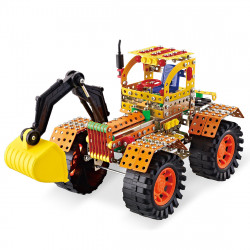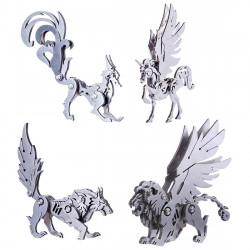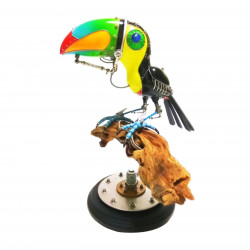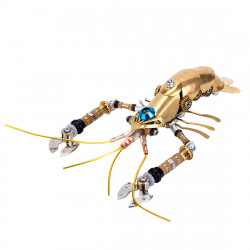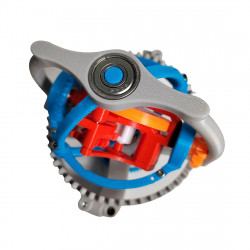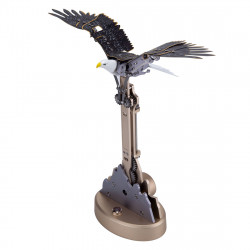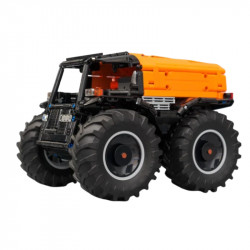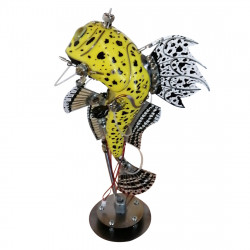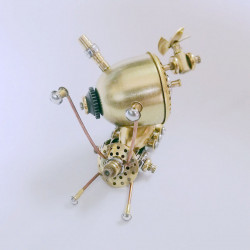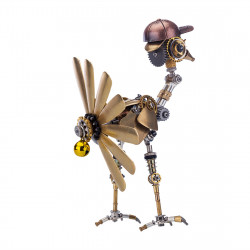Getting to know the Jumping Spiders

Getting to know the Jumping Spiders
Jumping spiders can live up to three years in captivity, but jumping spiders lifespan usually varies from six months to two years in the wild. Generally speaking, guys live shorter lives than females.
Tiny spiders, known as jumping spiders, jump to capture their food. They go by the name "Jumping Spider" for this reason. The little spider is uncommon to find in households. Both jumping spiders habitat and their preference are outside.
Many people are scared of spiders because they can be mistaken for the black widow spider. It would help if you spent the necessary time learning as much as possible about these spiders to comprehend them. The jumping spider will then appear to you from an entirely different angle.
What is the jumping spider?
Due to their diminutive stature, they must leap over their prey to capture it. Their moniker "jumping spiders" originates primarily from this. People fear them because they jump to fight off predators and find prey. A spider that jumps on someone is the last thing anyone wants.
There are about 4,000 species of them, and they are members of the Family Salticidae. The majority of species are located in Canada and the United States.
The color spectrum of the jumping spider includes black, brown, grey, and white, with a range of colored patterns. The mature spider is 4–18 mm and covered with scales or thick hair. Usually, these scales and hair are colorful to ward off potential predators.
Their main features
These spiders' primary characteristics are what make them adorable and fascinating. Their ability to jump and small size set them apart from other spiders. These are a few of the jumping spiders' primary characteristics.
- The color is usually black with pale markings. Other species are brown or gray.
- They are small, and the adults are only between 4 and 18 mm.
- They have standard 8 legs, just like other spiders, but no antennae.
- They can mostly be found outside on trees and flowers.
Their habitat
These spiders inhabit fascinating environments. They hardly ever exist in houses or other structures. Should you come into one indoors, it could be due to their accidental indoor hunting. Most places to find them are mountains, intertidal zones, tropical woods, and deserts.
These spiders can be found on park grass and in gardens in residential neighborhoods. It is easier for them to catch prey here, so they like to live here. Most of their prey is larger than the spiders; therefore, to kill them, they must strike quickly and unexpectedly.
Can Jumping spiders bite humans, and is it poisonous
People are terrified of jumping spiders because they can jump on people. Even if you glimpse one, you won't find one alone because they are so tiny. They may surprise you to hear, but they are not poisonous. They will only bite in response to physical danger.
The majority of symptoms following a jumping spider bite may not be noticeable. Nothing will indicate that you were bitten.
Most people have stated that a jumping spider bite might cause slight swelling, redness, and stinging, much like a mosquito bite. There have been allergic reactions to the bite, which can lead to more severe symptoms. In this situation, you ought to get medical help as soon as possible.
Should you get rid of jumping spiders?
You have no justification for getting rid of jumping spiders. Even if they were in your house, they are not dangerous and will not hurt you unless threatened. Humans do not need to kill jumping spiders; pesticides or insecticides are unnecessary. The primary justification for leaving them alone is that they are consuming the flies and mosquitoes surrounding your house.
It may be necessary to save one if you find one inside your house and release it into your garden. Since this is not jumping spiders habitat, they shouldn't be inside. It would help if you use caution when catching them so as not to hurt them. Because they are tiny, they will jump if they feel threatened.
You might want to have your jumping spider model if you find it interesting or if you like jumping spiders. These spiders are part of the Steam Punk 3D metal puzzle. After that, you can observe your spider and remind yourself not to kill those that enter your home.
FAQ
1. Do jumping spiders bite humans?
Although they rarely bite people, jumping spiders' venom does not harm humans. Their bites may result in slight discomfort, edema, and redness.
2. How long do jumping spiders live in captivity?
Jumping spiders can live up to three years in captivity. However, their lifespan in the wild usually ranges from six months to two years. Generally speaking, guys live shorter lives than females.
3. What do jumping spiders eat?
As carnivores, they are jumping spiders primarily consume insects like crickets, flies, and moths. There have also been reports of certain species ingesting flower nectar.
4. Where to find jumping spiders?
Except for Antarctica, jumping spiders are present all across the planet. They search for prey indoors near windows and doors, but their preferred outside habitats are tropical forests, grasslands, and deserts.
5. Do jumping spiders jump?
Jumping spiders are well-known for their amazing jumping skills. They use these skills to catch prey or escape danger. They have a 6.3-inch leaping ability.
6. Can jumping spiders recognize their owners?
Indeed, jumping spiders are renowned for their extraordinary jumping prowess, which they employ to seize prey or flee from danger. They have a 6.3-inch leaping ability.

